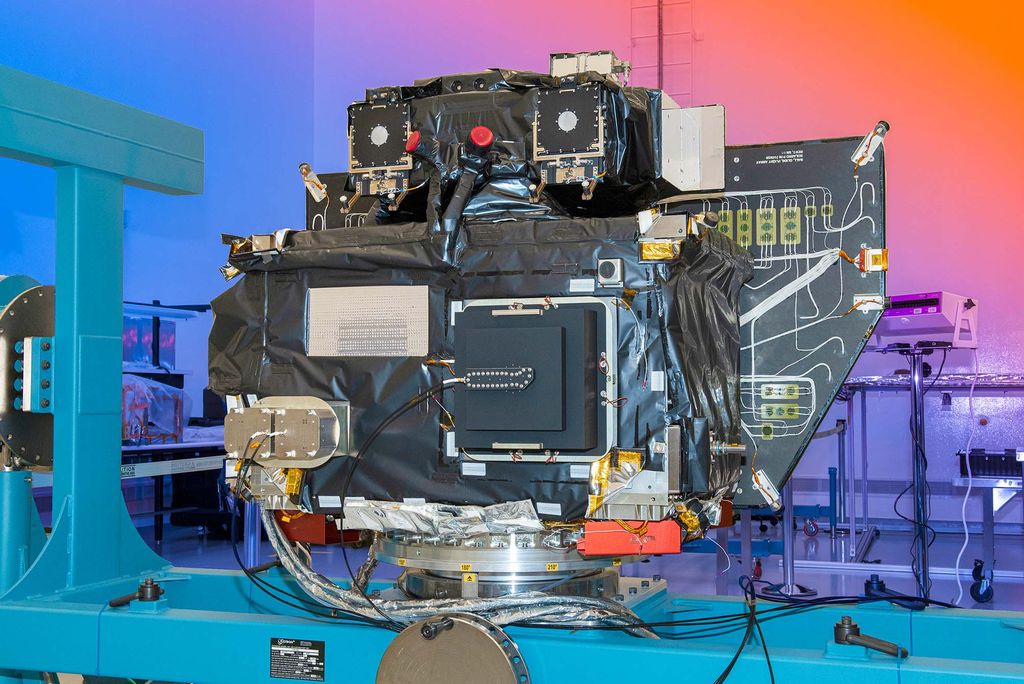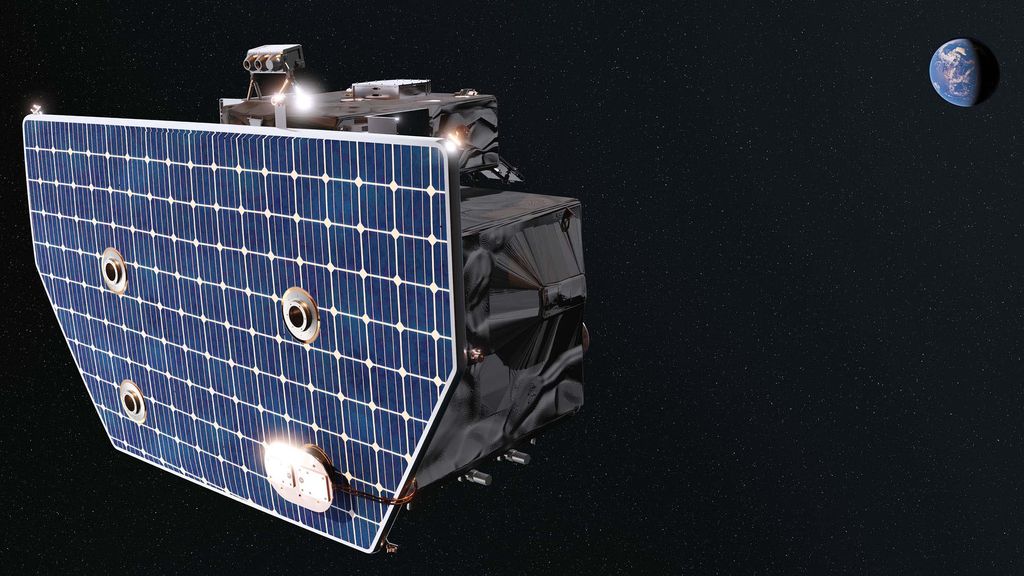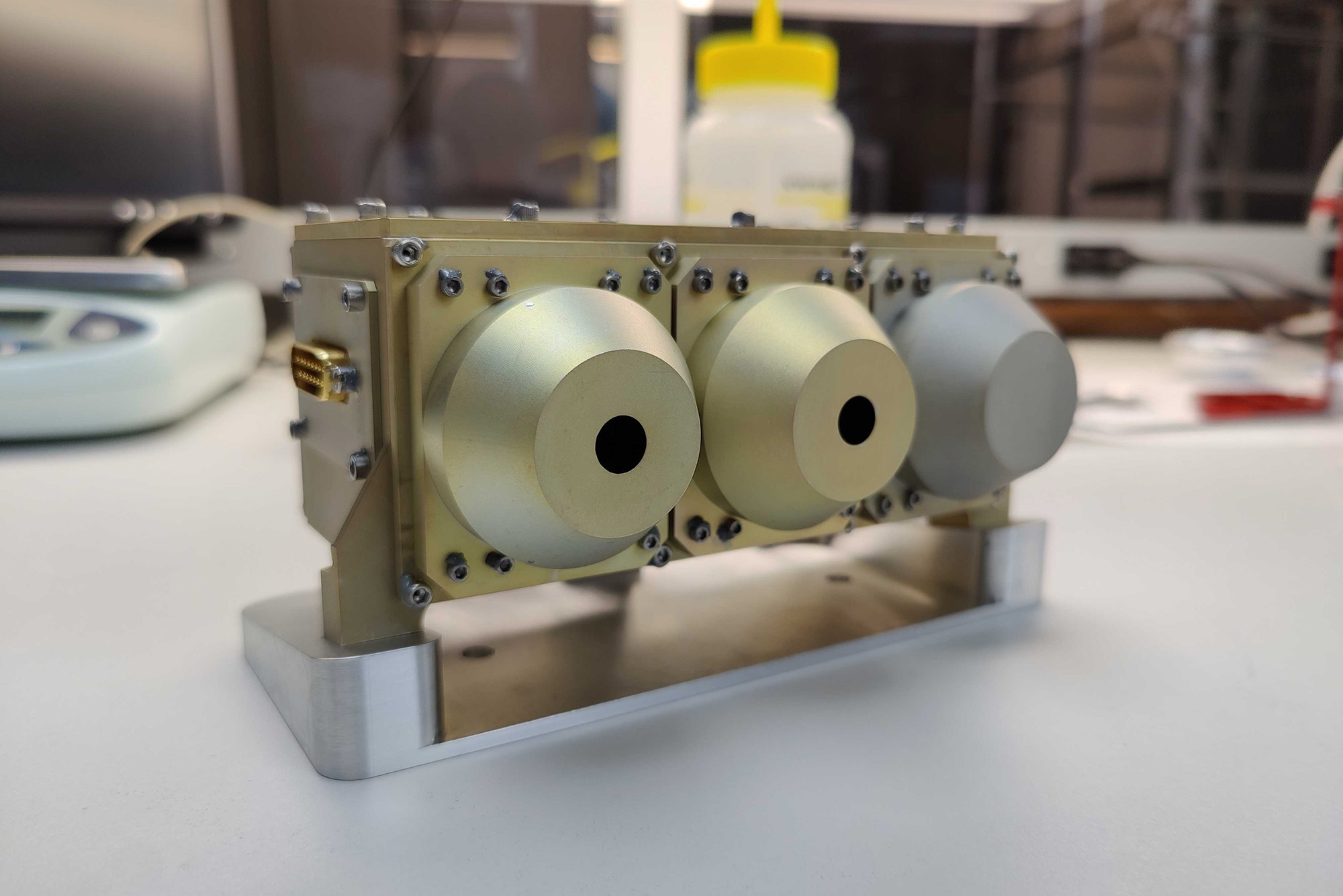NASA’s Carruthers Geocorona Observatory Launches into Space—with a Device Created by BU Students on Board
NASA’s Carruthers Geocorona Observatory was launched into space to take pictures of Earth’s most distant layer of atmosphere—with a BU-created device, called COSSMo, on board. Animated rendering: NASA’s Conceptual Imaging Lab/Jonathan North
NASA Space Weather Mission Blasts Off—with Device Created by BU Students Onboard
The observatory is on a mission to understand Earth’s most distant layer of atmosphere, a project led by a BU alum
Over 6,000 miles into space, Earth’s outermost atmosphere—called the exosphere—emits a glow like a bright neon halo. This luminescent ultraviolet light is known as the geocorona. Though the exosphere and the geocorona are extremely difficult to photograph and study, a team of scientists is on a mission to change that.
On September 24, at 7:32 am, a NASA satellite called the Carruthers Geocorona Observatory was launched into space to take pictures of Earth’s most distant layer of atmosphere and to continuously watch how the geocorona changes in response to the sun’s activity. It’s the first mission of its kind—and it has a heavy Boston University influence.

The mission is led by BU alum Lara Waldrop (CAS’97, GRS’04), now an associate professor at the University of Illinois Urbana-Champaign, and John Clarke, a BU College of Arts & Sciences professor emeritus in astronomy. The satellite also has BU student–created tech onboard.
“The exosphere is where Earth’s atmosphere interacts with the space environment, but we don’t know much about it because it’s so extended. We’re interested in discovering how these interactions take place,” says Clarke, the mission’s deputy principal investigator. He began conceptualizing the project in 2018 with a team of scientists and Waldrop, who was previously one of his students at BU. Using the technology of Carruthers, Clarke says the researchers will better understand the basic physical principles that have allowed Earth to maintain a stable atmosphere—unlike those of Mars and Venus, which have been lost in a process called atmospheric escape.
The Carruthers telescope will be suspended in space far past the edge of Earth’s exosphere, orbiting a point called the Sun-Earth L1 Lagrange point, which is where the gravitational pull of the sun and the Earth reach equilibrium, keeping the telescope in motion indefinitely. From that point, about a million miles from Earth, the observatory—built at the University of California, Berkeley’s Space Sciences Laboratory—will take pictures of Earth’s exosphere using two far ultraviolet cameras designed to illuminate details like its shape, size, and density.

Perched right above the primary telescope’s optics is another pair of lenses—a BU-created device called COSSMo, short for the Carruthers Observatory Student Solar Monitor. The device, which uses an array of photodetectors that measure the flow of photons from the sun, was created by a team of BU students in the University’s Space Physics & Technology Lab. The detectors filter incoming light to capture ultraviolet and soft X-ray measurements. Both of these wavelengths are crucial in forming the outer atmosphere, but impossible to observe from Earth’s surface, since they don’t pass through the lower atmosphere.

“The exosphere is always changing, and there’s a lot of drivers that influence it, one of which is solar input,” says Van Galaxy Naldoza (ENG’20,’25,’26), a PhD candidate in mechanical engineering who led the COSSMo project. (For those wondering, “Galaxy” has always been part of Naldoza’s name. He says it instilled in him an inherent interest in space.)
COSSMo points in the opposite direction of the main cameras—facing the sun rather than the Earth. The device will measure the incoming photons that directly influence the exosphere’s dynamic nature. The BU COSSMo team, which collaborated with researchers at the University of Illinois Urbana-Champaign, included Adam Bahlous-Boldi (ENG’23), Cadin Connor (CAS’20, ENG’22,’29), Emil Atz (ENG’23,’23), research scientist Ramiz A. Qudsi, and Brian Walsh, a BU College of Engineering associate professor of mechanical engineering and director of the Space Physics & Technology Lab.
According to NASA, the exosphere has a role in influencing geomagnetic storms, which can disrupt satellite communications and power grids, and pose risks to astronauts. The Carruthers mission aims to provide insights on how these storms develop to better predict and prepare for them. It will also help scientists understand how planetary atmospheres change over time. Carruthers is equipped to take images every 30 minutes for years to come. According to Clarke, there is enough fuel to power the spacecraft for the next 10 to 15 years.
“Scientifically, COSSMo and the entire Carruthers Geocorona Observatory will be groundbreaking,” Walsh says. “Much of the community is sitting at the edge of their seats to see the first images, showing how our outer atmosphere evolves with time.”
